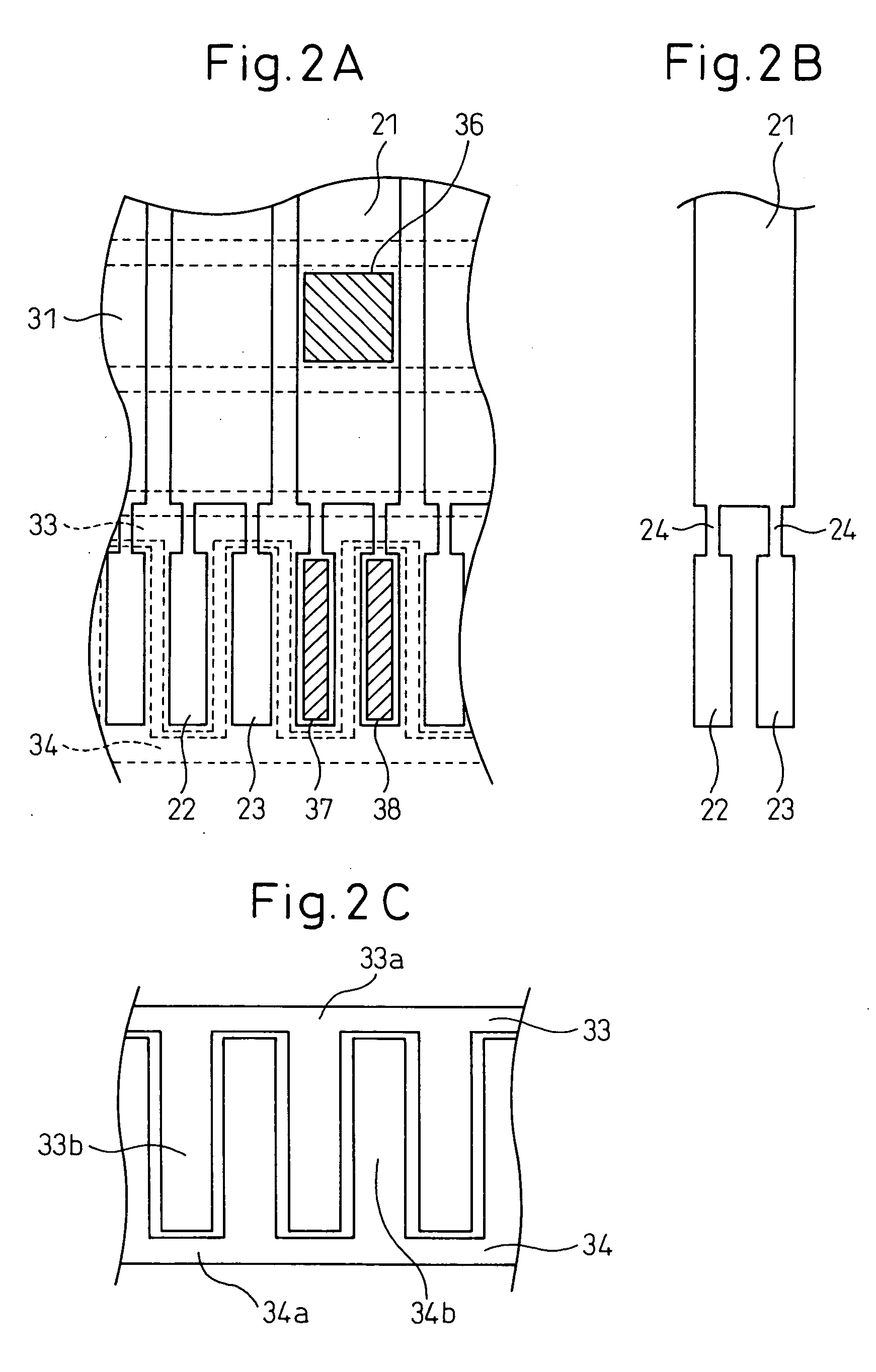Display Apparatus
- Summary
- Abstract
- Description
- Claims
- Application Information
AI Technical Summary
Benefits of technology
Problems solved by technology
Method used
Image
Examples
embodiment 1
[0049]FIGS. 1, 2, and 3 are diagrams showing the first embodiment of the present invention. FIG. 1 shows a liquid crystal panel according to the first embodiment: FIG. 1A is a plan view of the liquid crystal panel, and FIG. 1B is a plan view schematically showing an array of scanning electrodes. FIG. 2 presents enlarged plan views showing essential portions of electrodes: FIG. 2A shows the spatial relationship between signal electrodes and scanning electrodes (their positional relationship as viewed from the top), FIG. 2B shows the plan shape of a signal electrode taken from FIG. 2A, and FIG. 2C shows the plan shape of a portion of the scanning electrodes in a sub display section. In FIG. 2, the sub display section is shown by reducing its size, top to bottom, for illustrative purposes. FIG. 3 is a plan view showing the liquid crystal panel of the first embodiment.
[0050] An outline of the liquid crystal panel 10 will be described with reference to FIG. 3. A main display section 11 ...
embodiment 2
[0061] The second embodiment will be described with reference to FIG. 4. In the second embodiment, the sub display section 42 is located in one corner of the liquid crystal panel 40. FIG. 4A is a plan view of the liquid crystal panel, and FIG. 4B is a plan view schematically showing an array of scanning electrodes.
[0062] The arrangement of the main display section 41 and the sub display section 42 will be described with reference to FIG. 4A. The sub display section 42 is disposed in the lower right corner of the liquid crystal panel 40, and the area other than the sub display section 42 is allocated as the main display section 41. The liquid crystal panel 40 is a passive liquid crystal panel, as in the first embodiment.
[0063] The electrode configuration and the driving method will be described with reference to FIG. 4B. The scanning electrodes 41 are divided into two groups, one consisting of main scanning electrodes 43 and 44 formed in the main display section 41 and the other co...
embodiment 3
[0069] The third embodiment will be described with reference to FIG. 5. FIG. 5A shows how the signal electrodes overlap the scanning electrodes in a two-dimensional plane, and FIG. 5B shows the sub scanning electrodes in the sub display section. In FIG. 5A, the signal electrode configuration differs from the first and second embodiments in that each signal electrode comprises one main signal electrode 51 and three sub-signal electrode portions 53, 54, and 55 connected to it by thin wiring lines (narrow path portions: line width is about 10 μm); otherwise, the configuration is the same. Here, the sub-signal electrode portion 53 indicates the leftmost one of the three horizontally arranged sub-signal electrodes of the signal electrode 50. Likewise, 54 indicates the middle one, and 55 indicates the signal electrode portion located at the rightmost end.
[0070] In FIG. 5B, the upper sub scanning electrode 56 is formed in the shape of a comb whose teeth are pointed downward, and the pitch...
PUM
 Login to View More
Login to View More Abstract
Description
Claims
Application Information
 Login to View More
Login to View More - R&D
- Intellectual Property
- Life Sciences
- Materials
- Tech Scout
- Unparalleled Data Quality
- Higher Quality Content
- 60% Fewer Hallucinations
Browse by: Latest US Patents, China's latest patents, Technical Efficacy Thesaurus, Application Domain, Technology Topic, Popular Technical Reports.
© 2025 PatSnap. All rights reserved.Legal|Privacy policy|Modern Slavery Act Transparency Statement|Sitemap|About US| Contact US: help@patsnap.com



